Slips. Trips, and Falls Settlement Guide
Contents
- Slips. Trips, and Falls Settlement Guide
- Slip and Fall Settlements
- What Are Slip and Fall Accidents?
- Possible Slip and Fall Injuries
- When You’re Involved in a Slip and Fall Accident
- National Slip and Fall Statistics
- Negligence in Slip and Fall Accidents
- Proving Liability
- FAQs About Slip & Fall Accidents
- What type of lawyer handles slip-and-fall cases?
- Why are slip and fall cases hard to win?
- What To do when you slip and fall?
- How much compensation for slipping on wet floor?
- What is the average payout for a slip and fall in Florida?
- How much are most slip and fall settlements?
- What happens when you slip on the floor?
- What injury is most commonly the result of a slip and fall?
- How much can you get for a fall injury?
- Can I claim compensation for a fall?
- How much money does Walmart settle for slip-and-fall accidents?
- How long does it take to settle a slip and fall case in Florida?
- How long after a slip and fall can you sue in Florida?
Slip and fall accidents are a major source of injury and cause for concern in both the workplace and the home. Every year, millions of people across the world are affected by slips and falls, resulting in numerous hospital emergency room visits as well as missed days from work, and even fatalities.
In the United States alone, falls account for over 8 million hospital emergency room visits, representing 21.3% of total visits. Of these fall-related ER visits, slips and falls account for 12%, with fractures being the most serious consequence at 5%. Moreover, slips and falls are now seen as the primary reason for workers’ compensation claims and often result in devastating effects for those aged 55 years and older. In fact, around 15,000 elderly individuals died due to falls in 2005 – a figure that has risen from 7,700 over a decade earlier.
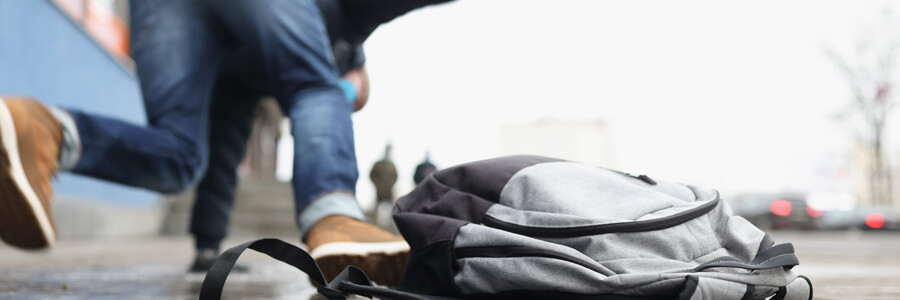
Floors and flooring materials contribute significantly to fall injuries, with the Consumer Product Safety Commission (CPSC) reporting more than 2 million such incidents each year. In addition, 50% of accidental deaths in the United States are caused by falls, with most incidents occurring at ground level rather than from an elevation.
Slips and falls have risen to become the sixth most common cause of fatality in individuals aged 70 years or older, while they serve as a primary contributor to fatal workplace incidents among those aged 85 years or older. – NFSI
Hip fractures due to falls are especially serious, commonly leading to health problems or death.
While statistics can paint a stark picture of this problem, it is worth noting that preventative measures can make a real difference.
Slip and Fall Settlements
The average settlement for slip and fall cases is typically between $10,000 and $50,000; however, averages do not always paint a complete picture, as these amounts can range much higher or lower depending on various conditions and factors.
Factors that Affect Slip and Fall Case Settlements
- Injuries sustained – Generally speaking, the more serious an injury is, the higher the compensation is likely to be. For instance, medical treatment for a broken finger will be much less expensive than that for a broken neck or traumatic brain injury (TBI). However, even when injuries are similar in severity, other factors may affect the ultimate compensation level.
- Types of Loss – The nature of a victim’s injury heavily influences the extent of their financial losses. This includes lost wages, medical care and expenses, pain and suffering, emotional distress, loss of enjoyment of life, and more. It’s important to note that even if an injury isn’t as serious as another one if its resulting losses are greater, the person with the less severe injury could receive higher compensation.
- Evidence – In certain circumstances where evidence of a premises owner’s liability or damages might be lacking, defendants may reduce or deny valid claims for compensation. To maximize chances of fair compensation, it’s wise for victims to seek out experienced legal representation when pursuing a slip and fall case. Studies have shown that those who hire an attorney typically receive over four times the amount of compensation than those who don’t.
- Legal Counsel – Research shows that injury victims who retain an attorney typically obtain over four times more in compensation than accident victims who choose to negotiate with their insurance company alone. Insurance companies have a history of convincing victims to settle quickly and accept minimal payouts for their damages, thereby depriving them of the rightful compensation they are due.
What Are Slip and Fall Accidents?
A slip and fall accident is defined as a fall that occurs when an individual loses traction or stumbles unexpectedly. Typical causes of these accidents include slippery floors, torn carpets, badly lit stairwells, tracked rain, snow, or ice, uneven flooring, changes in traction, poor lighting, cluttered floors, inappropriate footwear, unclear signage, and more. Slip and fall accidents can occur on a single level as well as from one level to a lower level such as stairs.
| Factors | Description | Example Data |
|---|---|---|
| Severity of Injury | Types of injuries and corresponding settlements | Minor: $5,000; Moderate: $25,000; Severe: $100,000 |
| Negligence | Property owner’s negligence determination | Negligent: 60%; Partially Negligent: 25%; Not Negligent: 15% |
| Location | Common locations of slip and fall accidents | Retail Stores: 40%; Restaurants: 30%; Public Sidewalks: 20% |
| Average Settlement Amount | Trends in average settlement amounts over time | Year 1: $20,000; Year 2: $22,000; Year 3: $25,000 |
| Legal Expenses | Allocation of settlement funds (legal fees, medical bills, plaintiff) | Legal Fees: 30%; Medical Bills: 40%; Plaintiff: 30% |
| Duration of Lawsuit | Time taken for slip-and-fall lawsuits to reach a settlement | Shortest: 6 months; Longest: 2 years |
| Contributory Negligence | Percentage of cases where the plaintiff’s negligence affects the settlement | Yes: 40%; No: 60% |
| Insurance Involvement | Frequency of insurance companies’ involvement | Involved: 70%; Not Involved: 30% |
Slip and fall accidents are a major cause of injuries in the United States and can occur in both public and private spaces. Every year, many individuals face serious injuries as a result of these accidents, ranging from scrapes and bruises to life-altering or even fatal injuries. It is important for us all to be aware of potential slip and fall hazards, and to understand how fault may be determined should a slip and fall take place.
Causes of Slip and Fall Accidents
As noted above, slip and fall accidents can be caused by a variety of different factors. These range from environmental issues such as slippery floors or bad lighting, to employer negligence such as a lack of safety equipment or inadequate worker training. In an effort to prevent slip and fall accidents, public entities such as schools and government buildings have stringent regulations in place that must be adhered to in order to ensure the safety of those using their premises. Perhaps the most vulnerable population when it comes to slip and fall accidents is elderly individuals, who are at an increased risk due to age-related balance issues or illnesses.
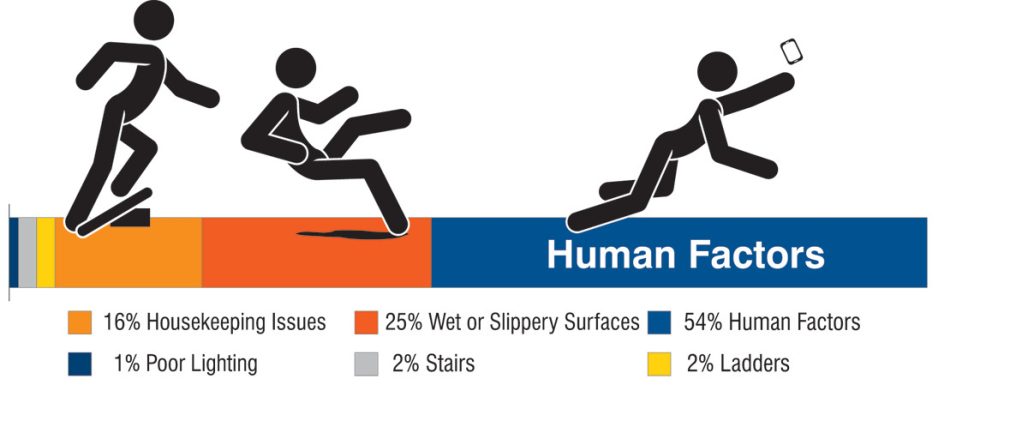
Consequences of Slip and Fall Accidents
The consequences of slips and falls can range from minor scrapes and bruises to permanent disability or even death. In the workplace, slips and falls are the leading cause of death for individuals aged 65 and above, and are among OSHA’s “fatal four” –one of the four leading causes of workplace fatalities in the country. However, slips can occur anywhere including in places such as nursing homes, parks, schools, driveways or sidewalks, private businesses, offices, construction sites, and more. All it takes is for an individual to lose their footing on a slippery surface or trip on an object that has been left carelessly in order to cause a serious accident.
Possible Slip and Fall Injuries
Slip and fall accidents can result in a range of injuries, from minor cuts and bruises to severe physical incapacitation or even death. It’s important to understand the full extent of possible injuries so you can take appropriate safety measures to avoid a dangerous accident.
- Broken Bones – The most common form of injury caused by slip and fall accidents is broken bones. Any part of the body can be affected, including the arms, legs, ribs, hips, wrists, ankles, and shoulders.
- Puncture Wounds – If sharp objects are present during a slip-and-fall accident, they can cause deep puncture wounds or lacerations. This could potentially result in tissue damage or internal bleeding if not properly treated.
- Head Injuries and TBIs – Falling on a hard surface can also lead to head trauma, ranging from mild concussions to more serious traumatic brain injuries (TBIs). Symptoms of both can include dizziness, headaches, memory loss, confusion, nausea, blurred vision, and mood changes.
- Spinal Cord Damage – The spinal cord is vulnerable to damage during a slip and fall due to the potential sudden force of impact. Depending on the severity of the injury, this can lead to partial or total paralysis.
- Lacerations – Sharp edges or objects on the ground can lead to lacerations or deep cuts that require stitches. These wounds may also become infected without prompt medical treatment.
- Death – In some cases, slip and fall accidents can cause fatal injuries. According to the Centers for Disease Control and Prevention (CDC), these accidents are the third-leading cause of preventable death in the United States after accidental poisoning and vehicle accidents.
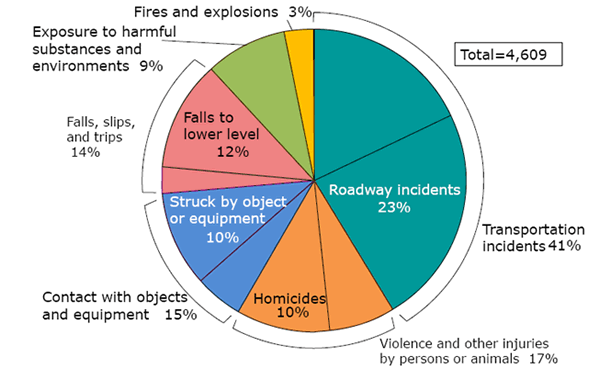
When You’re Involved in a Slip and Fall Accident
The consequences of a slip and fall accident can be serious, and you may be wondering if you have options to pursue legal compensation for your losses. Whether or not you have a valid case depends on several factors, including your own role in the incident. Understanding how contributory negligence and comparative negligence rules apply will help you determine whether you should take legal action.
Your Own Responsibility for the Accident
In some cases, you may have contributed to the accident in some way. If, for instance, you failed to see an obvious warning sign or ignored safety protocols, this could decrease your chances of recovering damages. In order to assess your liability in a slip and fall claim, it’s important to consider the exact circumstances surrounding the incident.
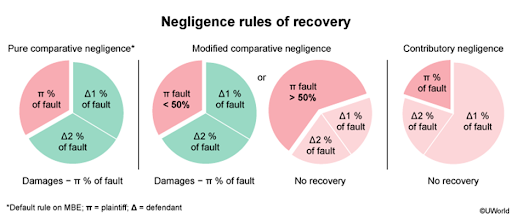
What is Contributory Negligence?
Certain states maintain strict contributory negligence rules, which stipulate that if you are even partly to blame for an accident, you are not entitled to seek compensation. This means that if any of your actions caused or exacerbated the situation leading up to your slip and fall, the court system might not award any damages.
What is Comparative Negligence?
Most states now adhere to comparative negligence laws, which allow claimants to pursue compensation even if they were partially responsible for the incident. In pure comparative negligence jurisdictions, you can recover damages as long as the other party is more at fault than you are. In these cases, your compensation award will be reduced based on your percentage of fault. In modified comparative negligence states, however, you can only obtain compensation if the other party is 50% or 51% responsible for the accident.
National Slip and Fall Statistics
An alarming number of accidents occur due to slips and falls on the same level every year in the United States. Not only are these accidents potentially fatal, but they can also lead to serious injuries and long-term disabilities. It is important for individuals to be aware of the risks involved and take appropriate safety precautions.
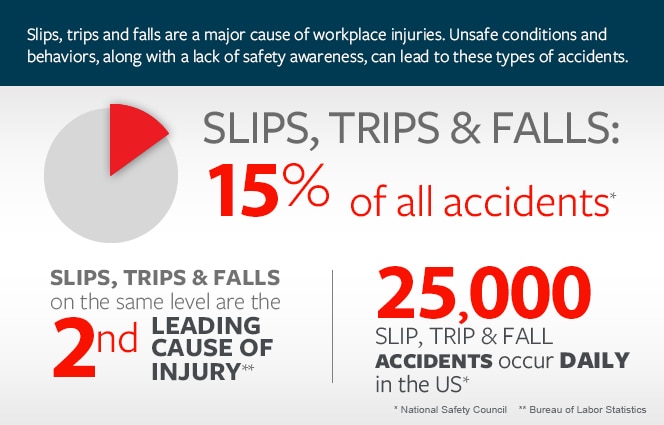
Fatalities
Fall fatalities are nearly equally divided between men and women, with both genders accounting for 5% of job-related fall deaths (Bureau of Labor Statistics). Falls also account for over 8 million emergency room visits, representing 21.3% of all visits. Fractures are the most serious consequence of falls, occurring in 5% of all cases.
Workers’ Compensation Claims
While slips and falls are not a leading cause of fatal workplace injuries, they do top the list when it comes to causing work-related absences. They are also a leading reason for workers’ compensation claims and occupational injury for people aged 55 years and older.
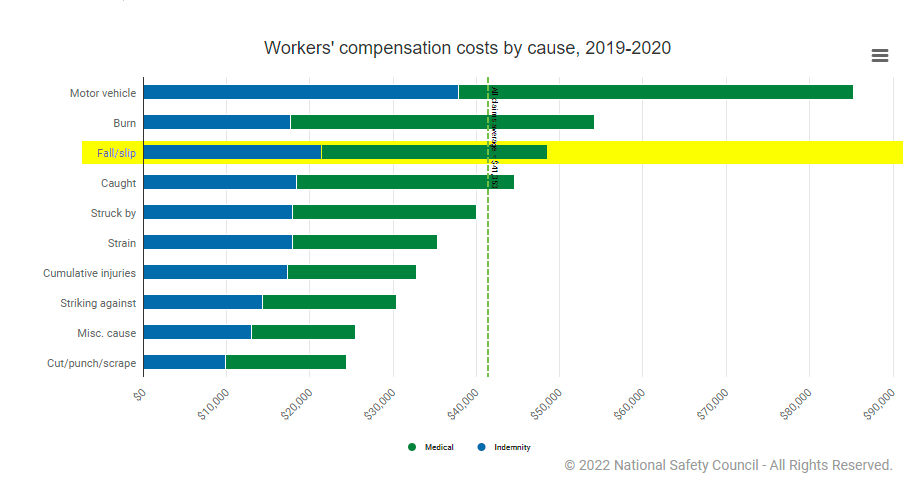
Home Accidents
Floors and flooring materials contribute directly to more than 2 million fall injuries each year, according to the Consumer Product Safety Commission (CPSC). Half of all accidental deaths in the home are caused by a fall, most of which happen at ground level rather than an elevation.
The Elderly
Among all fall-related fractures, hip fractures stand out as the most severe, often resulting in significant health complications and a higher incidence of fatalities. According to the CDC, up to one-third of people over the age of 65 will experience a fall every year, while half of them are repeat fallers. Approximately 15,000 people die annually as a result of falls and 1.8 million visit the emergency room each year because of them. For people aged 85 or older, falls are the leading cause of injury-related death.
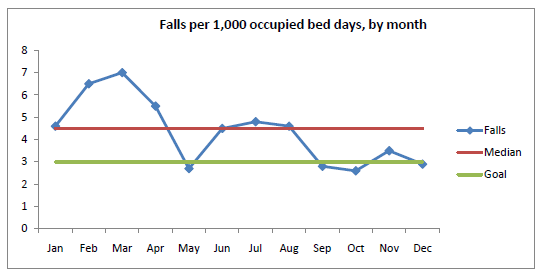
Costs
Worker’s compensation claims related to slipping on slick floors cost approximately $70 billion annually according to NSC Injury Facts. In addition, compensable fall cases account for 16% of worker’s compensation claims and 26% of all costs, with 33% being spent on sprains and strains alone.
Prevention
In order to reduce fall-related injuries, individuals should exercise precaution when walking on slippery surfaces, use handrails when navigating stairs, wear appropriate footwear, and clear their environment of obstacles that can cause trips or slips. Additionally, employers should ensure that all workplace floors meet OSHA standards and provide safety training as needed. By raising awareness of slip and fall risks in both home and work environments, we can make a difference in preventing these dangerous accidents.
Negligence in Slip and Fall Accidents
Slips and falls can be a serious hazard, and property owners and operators have an obligation to ensure that their premises are safe and free of potential dangers. Businesses, public areas such as parks and schools, and employers must take the necessary precautions and conduct routine maintenance in order to protect visitors from harm. This could include using non-slip rugs or mats, replacing worn-out carpeting, and installing handrails where needed.
Failing to do this may lead to liability for any slip and fall injuries that occur. It is the responsibility of the property owner to make sure that the space is safe for everyone who visits. By taking these steps, we can help reduce the occurrence of slip and fall accidents and keep our communities safe.
| Negligence Type | Description | Percentage of Cases |
|---|---|---|
| Property Owner Negligence | Situations where the property owner is solely responsible for the accident due to hazards or lack of maintenance. | 60% |
| Plaintiff Negligence | Cases where the plaintiff’s actions or negligence contributed significantly to the accident, reducing the property owner’s liability. | 20% |
| Shared Negligence | Instances where both the property owner and the plaintiff share responsibility for the accident due to contributory negligence. | 15% |
| Not Negligent (No-Fault) | Accidents occur without clear negligence on either the part of the property owner or the plaintiff, often due to unforeseeable circumstances. | 5% |
This table provides a sample overview of the different types of negligence in slip and fall accidents, along with the percentage of cases in which each type is typically observed.
Property Owner Negligence
Property owners are expected to maintain their premises safely, addressing known hazards or providing appropriate warning of potential dangers. If a property owner fails to do either of these, they can be held liable for any resulting falls.
Occupier Liability
Those occupying a space also have an obligation to ensure that the premises are safe. Occupiers should correct any known hazards or notify the owner promptly if they are unable to do so themselves. Failing to fulfill this duty of care could leave them liable for any falls.
Who Do I Sue?
If you’re injured on someone else’s property, typically you would file a slip and fall lawsuit against the occupier. However, there may be cases where you should pursue a claim against the owner instead. This may include situations where the owner had direct control over the area (such as a common area in an apartment building), failed to disclose any hazards before renting out the space, or failed to meet certain responsibilities stipulated in the lease agreement.
To identify who should be held accountable for your slip and fall injury, it’s best to consult with an experienced attorney. They will help you to evaluate your situation and determine whether filing a claim against the property owner or occupier is most appropriate.
Proving Liability
If you’ve suffered an injury due to a slip or fall accident, it’s important to obtain the right evidence in order to strengthen your case. This evidence includes:
- photographic and video records of the incident
- medical treatment records related to your injuries
- maintenance logs for any faulty flooring or installations
- economic assessments for cases involving lost income
- estimates for all other damages caused by the accident
Once your attorney has compiled all this information, interviewed any relevant witnesses, and consulted with experts to gain additional insight into the injuries sustained or the safety of the facility in question, they can build a comprehensive case that will stand up in court if necessary. Usually, these types of injury claims can be settled without having to take the issue to court, as the parties involved come to a satisfactory agreement. When it is necessary to take legal action however — especially in cases where the injuries from a slip and fall have been particularly severe and impacted your ability to live a normal life — an attorney can represent you in court and pursue a settlement on your behalf.
FAQs About Slip & Fall Accidents
What type of lawyer handles slip-and-fall cases?
Slip and fall cases generally fall under the category of personal injury law, and lawyers who specialize in personal injury cases are the ones who typically handle slip and fall cases. These lawyers are known as “personal injury attorneys” or “slip and fall attorneys.” They have experience in representing individuals who have been injured due to the negligence of others, including slip and fall accidents.
Personal injury attorneys handle a wide range of cases, including:
- Slip and Fall Accidents: Cases involving injuries on someone else’s property due to hazards or negligence.
- Car Accidents: Cases related to injuries sustained in automobile accidents.
- Medical Malpractice: Cases where medical professionals are alleged to have provided substandard care resulting in injury or harm.
- Product Liability: Cases involving injuries caused by defective products.
- Workplace Accidents: Cases related to injuries sustained at the workplace, often resulting in workers’ compensation claims.
- Dog Bites: Cases involving injuries caused by dog attacks.
When seeking legal representation for a slip and fall case, it’s important to choose a personal injury attorney with experience in handling premises liability cases, as these cases can be complex and require knowledge of local laws and regulations. A qualified attorney can help assess the strength of your case, negotiate with insurance companies, and, if necessary, represent you in court to seek compensation for your injuries.
Why are slip and fall cases hard to win?
Slip-and-fall cases can be difficult to win due to the high burden of proof needed to establish negligence on behalf of the responsible party. The plaintiff must prove that the owner or occupier of the property had knowledge, or should have reasonably been aware, that a dangerous condition existed on their premises. The plaintiff also must demonstrate how their injuries were directly caused by this condition.
What To do when you slip and fall?
If you have experienced a slip and fall accident, there are a few steps you should take. First, seek medical attention for any injury you may have sustained. It is important to document any physical injuries as soon as possible after the accident. Take photographs of the conditions that led to your accident and any visible injuries they may have caused. Make sure to obtain contact information from anyone who witnessed the incident. Finally, consult an experienced slip and fall attorney who can review your case and discuss your options for seeking compensation.
How much compensation for slipping on wet floor?
The amount of compensation available for a slip and fall accident will depend on multiple factors, such as the severity of the injury, economic losses (such as lost wages), and other damages. An experienced slip-and-fall lawyer can help you evaluate your case and work to secure fair compensation for your losses.
What is the average payout for a slip and fall in Florida?
The amount of settlement that you can receive for a slip and fall in Florida will depend on several factors, including but not limited to the extent of your injuries, whether or not any negligent parties can be held liable, and applicable insurance coverage. It is important to speak with an experienced lawyer who can review all details related to your case and provide guidance regarding how much you could potentially receive in a settlement or award.
How much are most slip and fall settlements?
The amount of settlements varies greatly depending on the circumstances surrounding each unique case. Settlements can range anywhere from a few hundred dollars up to several thousands of dollars. In some cases, punitive damages can be sought if the negligence was particularly egregious. Ultimately, it depends on the specifics of each situation and only an experienced slip-and-fall lawyer can accurately determine what type of payment could potentially result from a settlement or award.
What happens when you slip on the floor?
When someone slips on an unexpectedly hazardous surface, they could experience significant injuries such as sprains, strains, bruises, broken bones, spinal cord damage, or even traumatic brain injuries. Depending on the severity of these injuries, they could require extensive medical treatment or long-term care that would need to be compensated through a settlement or award.
What injury is most commonly the result of a slip and fall?
The most common injury associated with a slip and fall accident is a sprain or strain, typically involving ligaments, muscles, or tendons. Sprains can vary in severity from mild discomfort to complete tears while strains refer to pulled or stretched muscles. Both types of injuries can cause extended immobilization, necessitating long-term care or physical therapy.
How much can you get for a fall injury?
The amount of compensation available to those injured in a slip and fall accident depends on multiple factors, such as the extent of the injury, economic losses such as lost wages, and applicable insurance coverage. An experienced slip-and-fall lawyer can help you evaluate your case and work to secure fair compensation for your losses.
Can I claim compensation for a fall?
Yes, it is typically possible to seek financial compensation through a civil lawsuit when you have been injured as a result of someone else’s negligence. However, it is important to understand that each state has different laws governing liability in these types of cases, so it is critical that you consult with an experienced attorney who understands the intricacies involved with slip and fall accidents in your area.
How much money does Walmart settle for slip-and-fall accidents?
The total amount of money that Walmart settles for slip and fall accidents will depend on multiple factors, such as the severity of the injury, economic losses resulting from the accident, and applicable insurance policies. Therefore, it is impossible to answer this question without further information about a specific case.
How long does it take to settle a slip and fall case in Florida?
The timeline for settling a slip-and-fall case in Florida will depend on multiple factors, such as how quickly evidence can be gathered and whether or not a dispositive motion is filed. Most slip-and-fall cases settle within 2-3 years; however, it is important to understand that each case is different so this timeline may fluctuate depending on specific circumstances.
How long after a slip and fall can you sue in Florida?
In Florida, plaintiffs are required to file suit within four years of the date of their accident in order to recover compensation for damages sustained in a slip and fall accident. It is important to understand that missing this deadline can mean losing out on recovering any costs associated with medical bills or lost wages. Therefore, it is critical that you speak with an experienced attorney as soon as possible after being injured in a slip and fall accident to ensure that all filing deadlines are met.




I once experienced a slip while walking on a wet floor at a grocery store. It was a rainy day, and the floor near the entrance was wet from people tracking in water from outside. As I entered the store, I didn’t notice the wet floor sign and took a step, only to lose my balance and slip. I ended up falling on my backside, causing some embarrassment and minor pain.
This incident made me realize the importance of proper signage and maintenance in public spaces. Had there been a clear warning sign or if the floor had been promptly dried, I could have avoided the slip and potential injury. It also highlighted the need for individuals to be cautious and aware of their surroundings, especially in potentially hazardous conditions.
After the incident, I reported the slip to the store manager, who apologized and assured me that they would take immediate action to prevent similar accidents in the future. This experience taught me the importance of proactive measures in preventing slips and falls, both for businesses and individuals.